This was on my season’s wildlife agenda from the outset, after I saw quite spectacular pictures of multiple Lizard Orchids online last summer at the well-known national site now featured. So the previous post’s local record of the strange looking subject was intended as a hor’s d’ouevre to a rather more substantial main course today.
Berrow Dunes (see here) comprises just over two miles of flat, sandy terrain along the Bristol Channel coast that is part of a three times larger SSSI. The greater portion is occupied by the Burnham and Berrow Golf Club, which though a top-ranked links facility is also managed to cater for the 270 species of wild plant that it hosts. I was advised by fellow Hardy Orchid Society members that golfers and grounds staff here are used to and mostly sympathetic towards botanists scrambling around in the deep rough, provided those visitors are sensible in their movements. One had given me two good locations along a public right of way that crosses the course from an entry point behind a Co-op convenience store in Berrow Road, Burnham-on-Sea (TA8 2JQ – ST 299515).



Using a small public car park opposite that shop, I strode out at around 11 am, but as so often at first found difficulty in matching the Google Maps aerial views I carried to the actual lie of the land. Eventually I met two other observers who took me back to a spot that held three Lizard Orchid, two of which were starting to go over. After more wandering about I realised this was indeed the second pin-drop location I was seeking. Now I had my bearings, and on walking back to the first pin found two more newly arrived fieldsmen, one of whom lived locally, who had clearly already found what I was looking for.
This is a large hollow on the first dune ridge the right of way crosses (pictured above), just to the left of a sign post that is visible from the entry point. It is conveniently out of the way and sight of passing golfers on the fairways to either side. I include this detail so that readers unfamiliar with the site might locate this hot spot more readily than I did. Growing in long grass my subdued-toned quest at first could be difficult to pick out, but once we got our collective eyes in we counted more than 20 plants here at various stages of their blooming cycle: some pristine, others going over and more that were quite small (pictured below) and so presumably young. The local observer said there were a lot more of them here last year.



Less conspicuous Lizard Orchids skulking in the long grass
Scarce and localised nationally on the edge of its European range, the red-listed Lizard Orchid (see here) is also notoriously sporadic from season to season. Often occurring singly like Oxon’s sole representative, or in greater quantities such as here, the species favours roadside verges, woodland edges, old quarries, calcareous grassland and stable, coastal dune systems. It has an association with golf courses, most notably at today’s site and Sandwich in Kent.
This is potentially Great Britain’s loftiest Orchid, capable of reaching a metre in height with as many as 80 densely-packed flowers in a spike, as well as one of the more bizarre. More usual dimensions range from 25 up to 70 cm tall. The pale greenish-white flowers with purple highlights are said to resemble the head, legs and tail of its reptilian appellation; while long, dangling, curled frills and delicate spots and stripes increase the exotic quality. This June and July-flowering plant is said to emit a distinct odour of goats to attract pollinators, but I neither know what exactly that might be or ever remember to sniff them to find out.

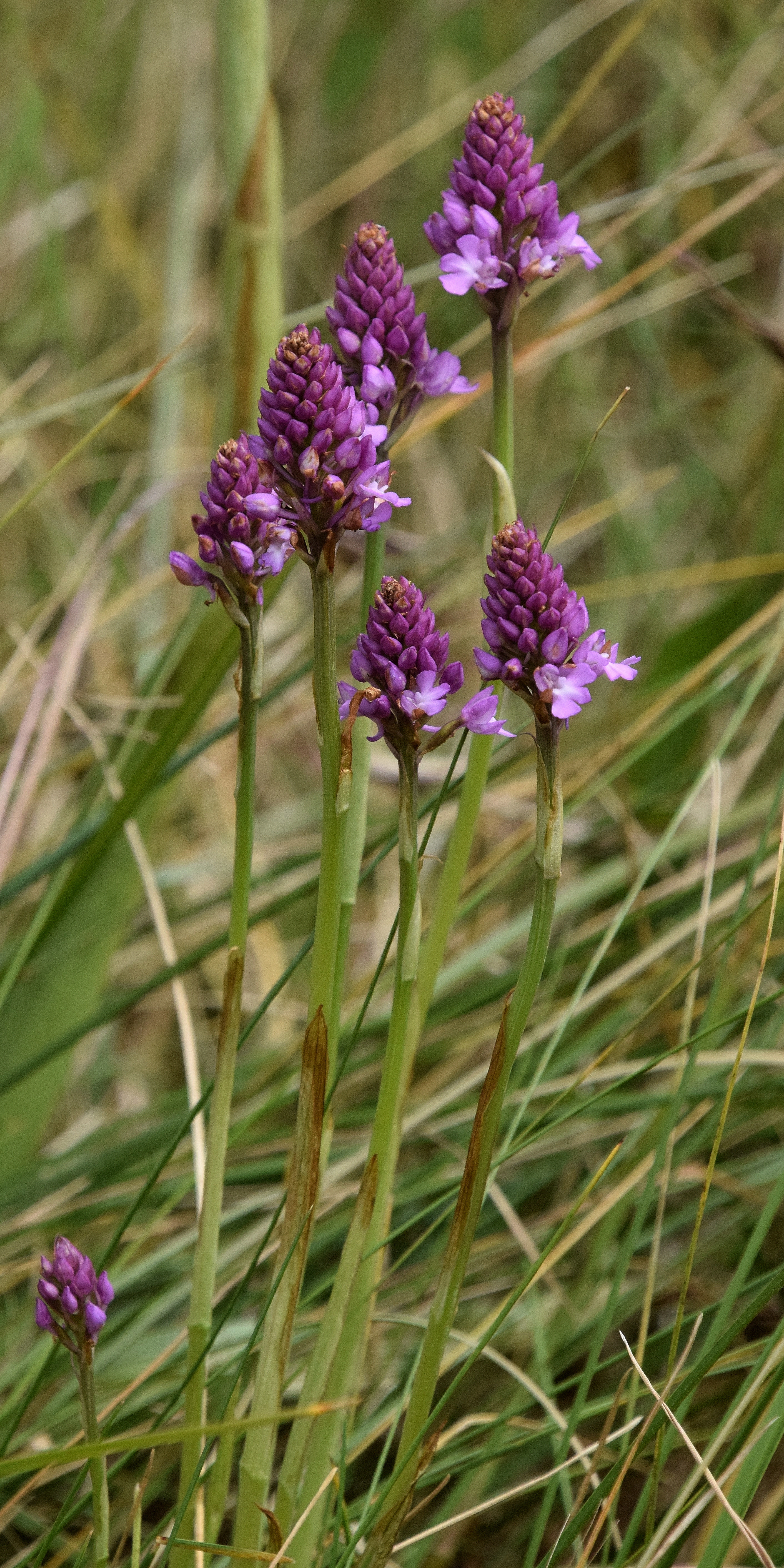
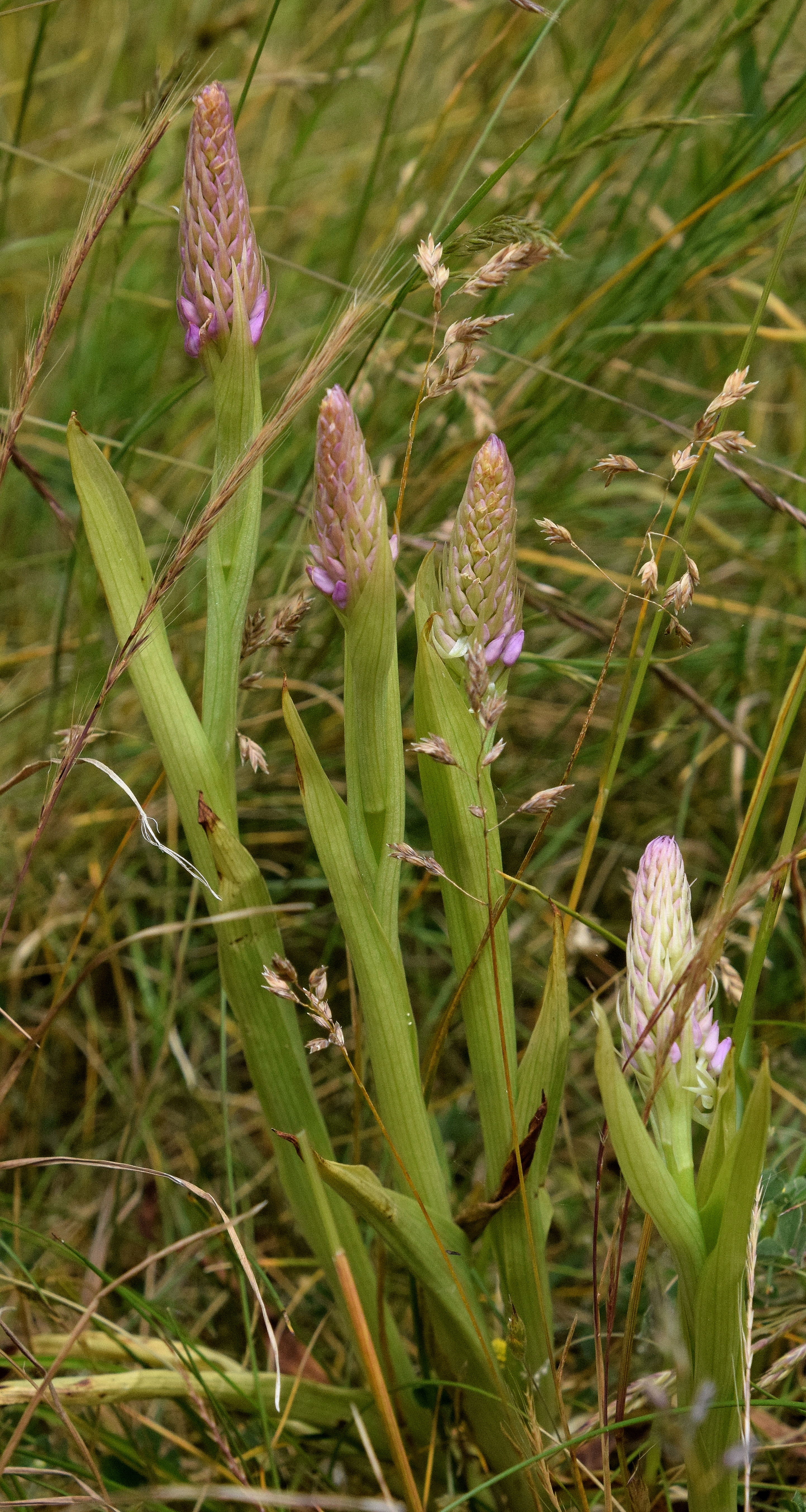

Other Berrow Dunes Orchids
Southern Marsh, Common Spotted, Pyramidal and Bee Orchids are also well represented at Berrow Dunes. I found some attractive examples of the first named (above, far left) along a boardwalk across an area of marsh at the far end of the right of way. Pyramidal Orchid (rest of sequence) were plentiful in the same spots as the Lizards, while more diminutive Bee were also present in the aforementioned hollow, requiring care not to be trodden upon.
Another notable plant there in numbers was the enigmatic Common Broomrape (pictured below), that blooms from June to September and can be confused with Orchids by the less experienced including myself in the past. Those, like the similarly toned and sized Birds-nest Orchid (see here), have no green parts so do not photosynthesise, being instead parasitic upon the roots of various other host plants from which they take their own nutrients. Hence, rather like fungi they do not appear above ground until the flower spikes thrust upward.
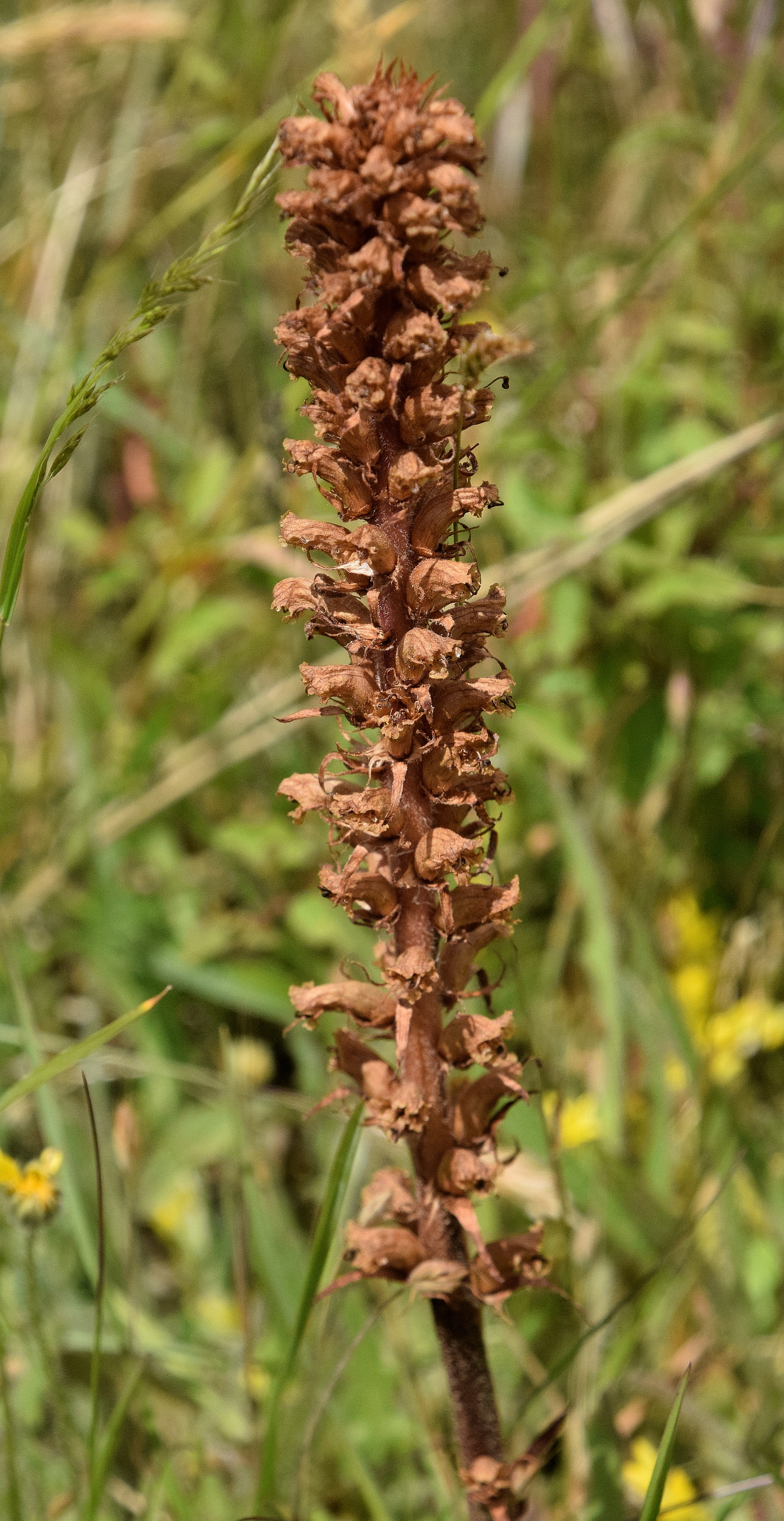

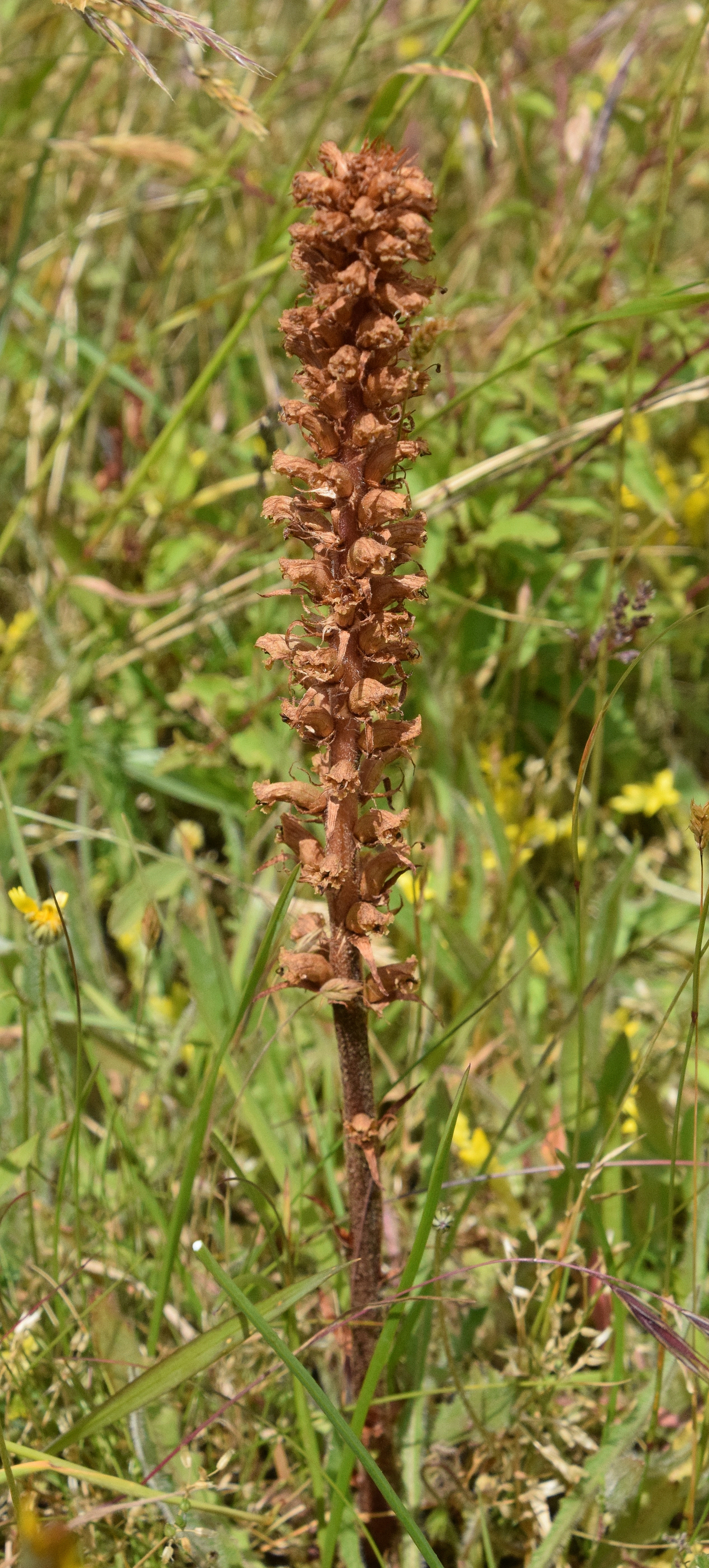

Common Broomrape
I had noted two more possible Lizard Orchid locations in advance, a little further north from older records published online (see here); but they were not near the public right of way and we were present at a busy golfing time of day. So instead I followed my chance acquaintances by road to two meadows adjacent to the far northern end of the course, to witness their profusion of Southern Marsh Orchid (pictured below).
These and the closely related Early Marsh must be amongst my favourite Orchids, since they produce such robust, densely-packed flower spikes. The appropriately named Common Spotted Orchid seems bland and uninteresting by comparison. Today’s experience dwarfed my previous substantive one of pure Southern Marsh at Tuckmill Meadows, Oxon a year ago; and confirmed the great majority of those I then considered at Clattinger Farm, Wilts were hybrids (see here for both).
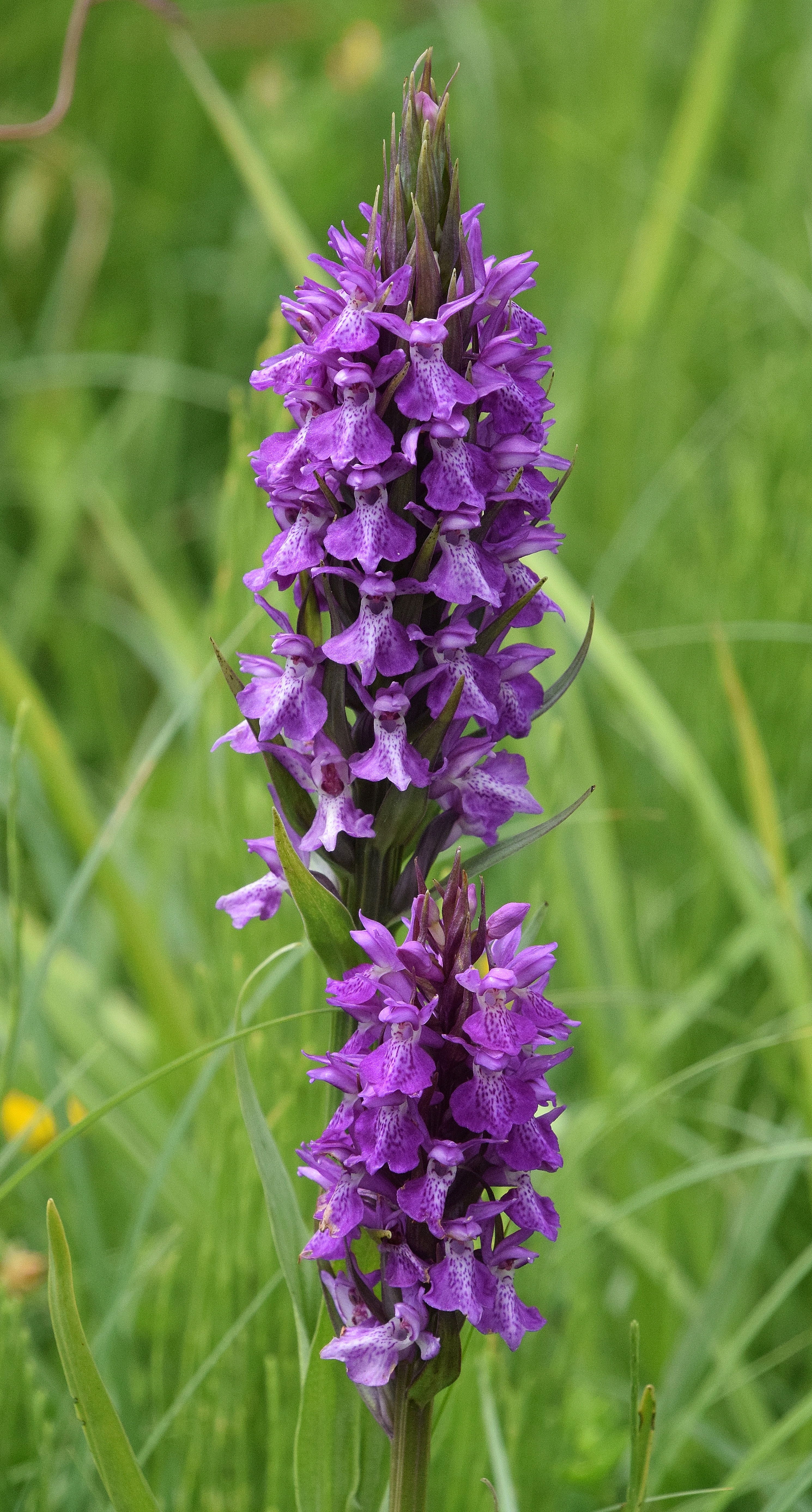
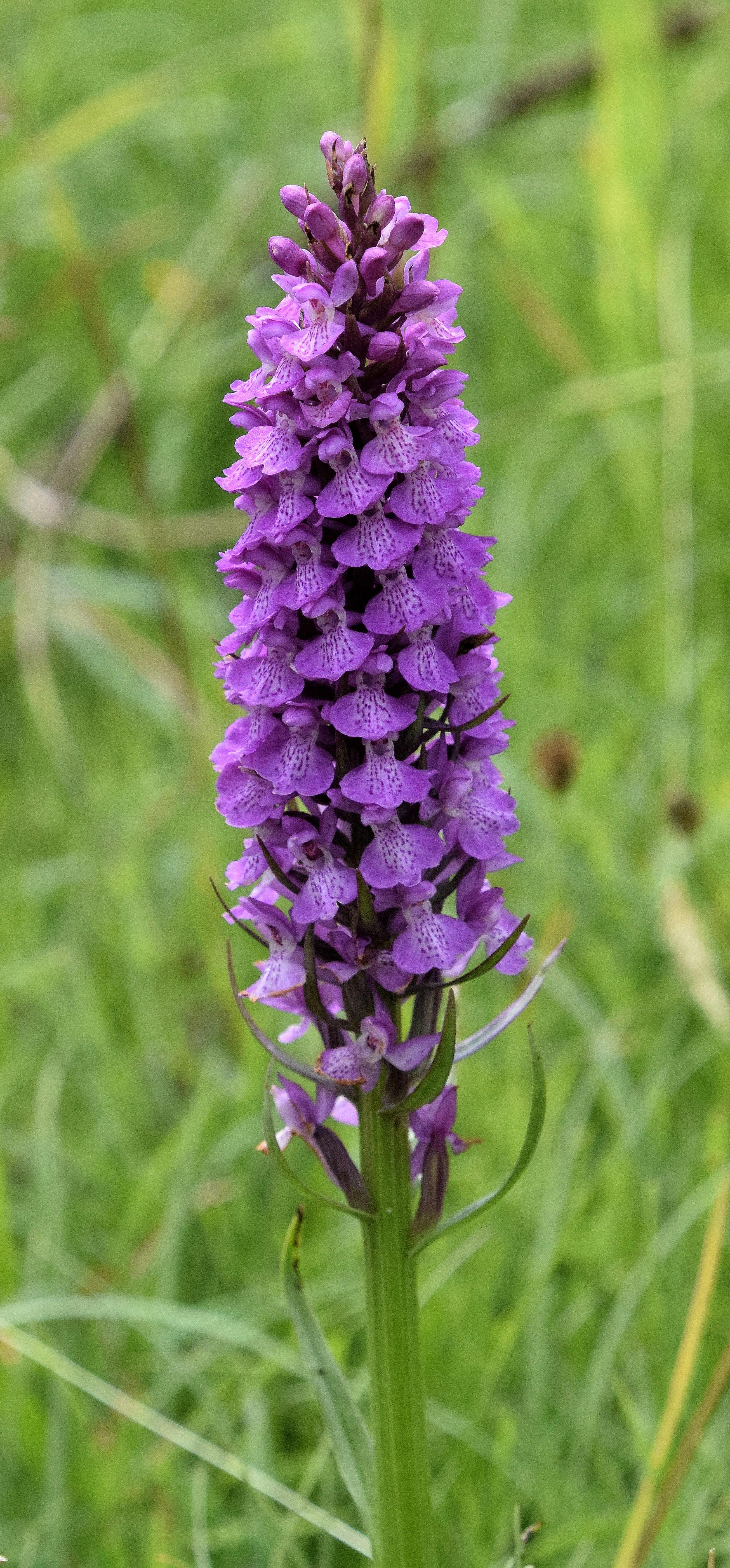
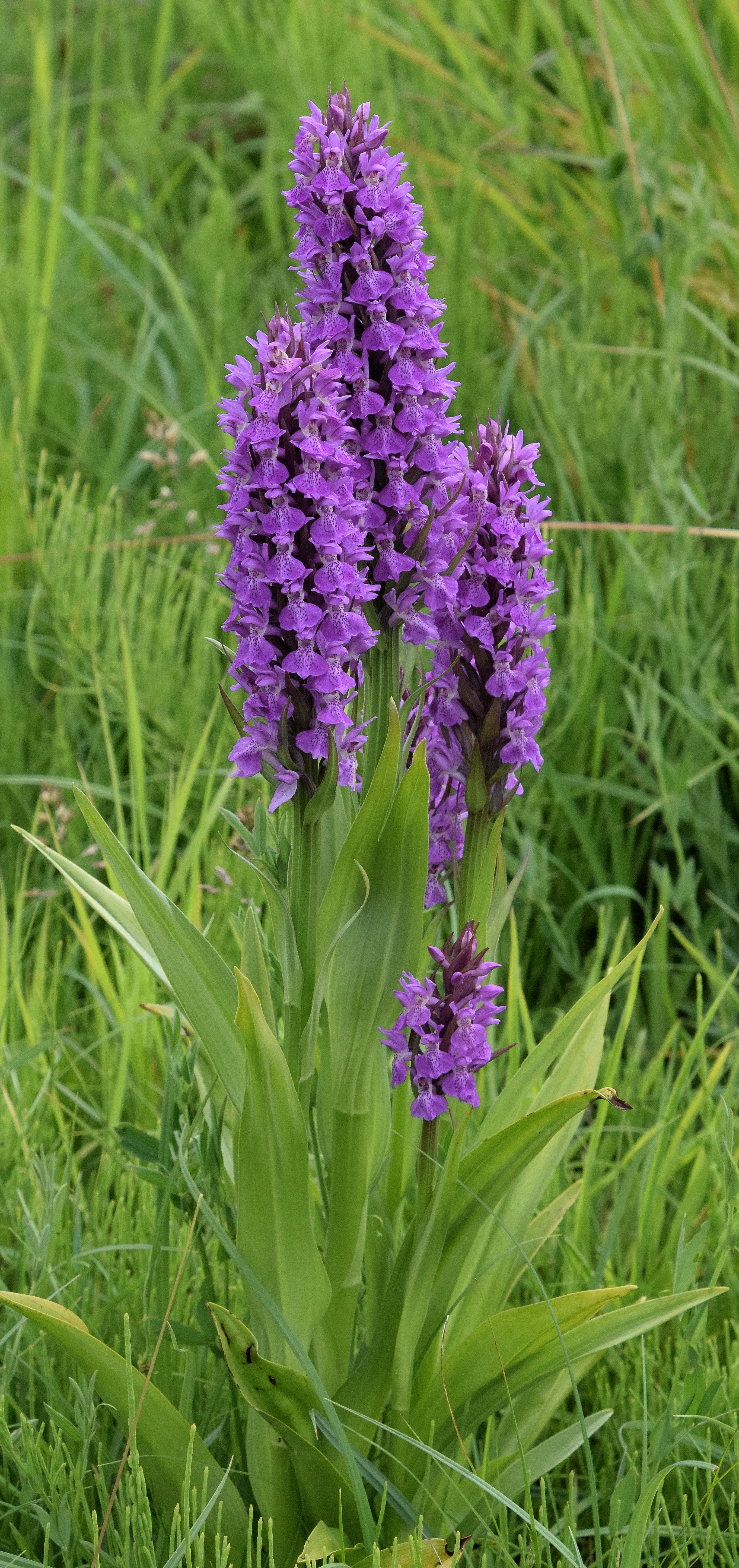
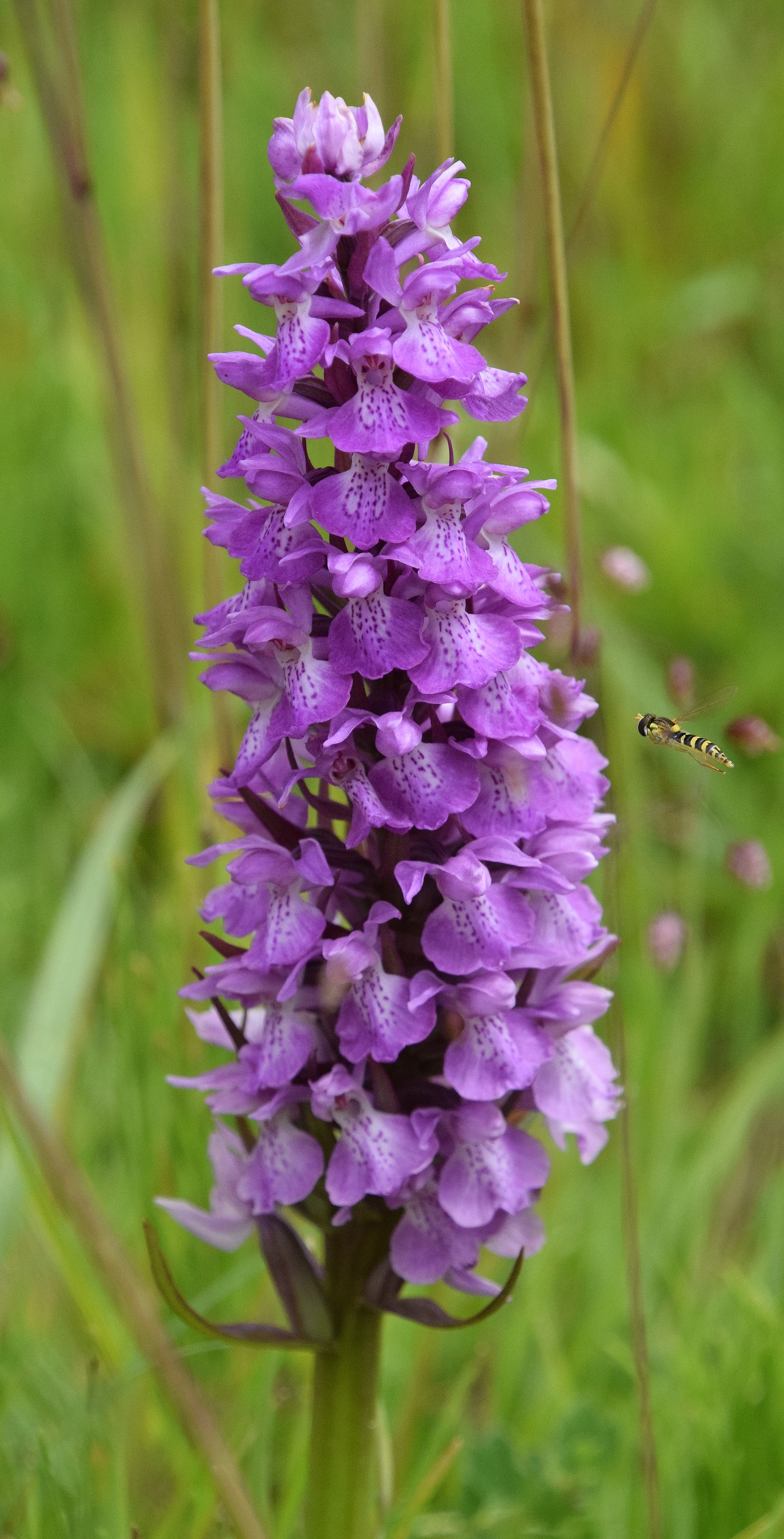
Southern Marsh Orchids
Lastly, I could only imagine the wildlife potential of a delightfully unkempt churchyard I wandered through in the village of Berrow itself (pictured below) before heading home. Here quite a few more Pyramidal Orchids were amongst the wild plants appreciating the apparent lack of mowing or strimming regime, but I had little time remaining in which to search out further biodiversity. If only more public spaces were managed in such a way!
It seems I had not visited Berrow Dunes and its golf course in a vintage year for their stand out botanical encounter of the Lizard kind. But today was another excellent episode in my current series of Orchid adventures. The much followed, often iconic plants have provided a similar capacity to fascinate now that summer butterflies and Odonata hold little more mystery given their own familiarity. But the still available returns are once again diminishing in difficulty and travelling distance terms, so how I might evolve for wildlife motivation next year I cannot tell.


